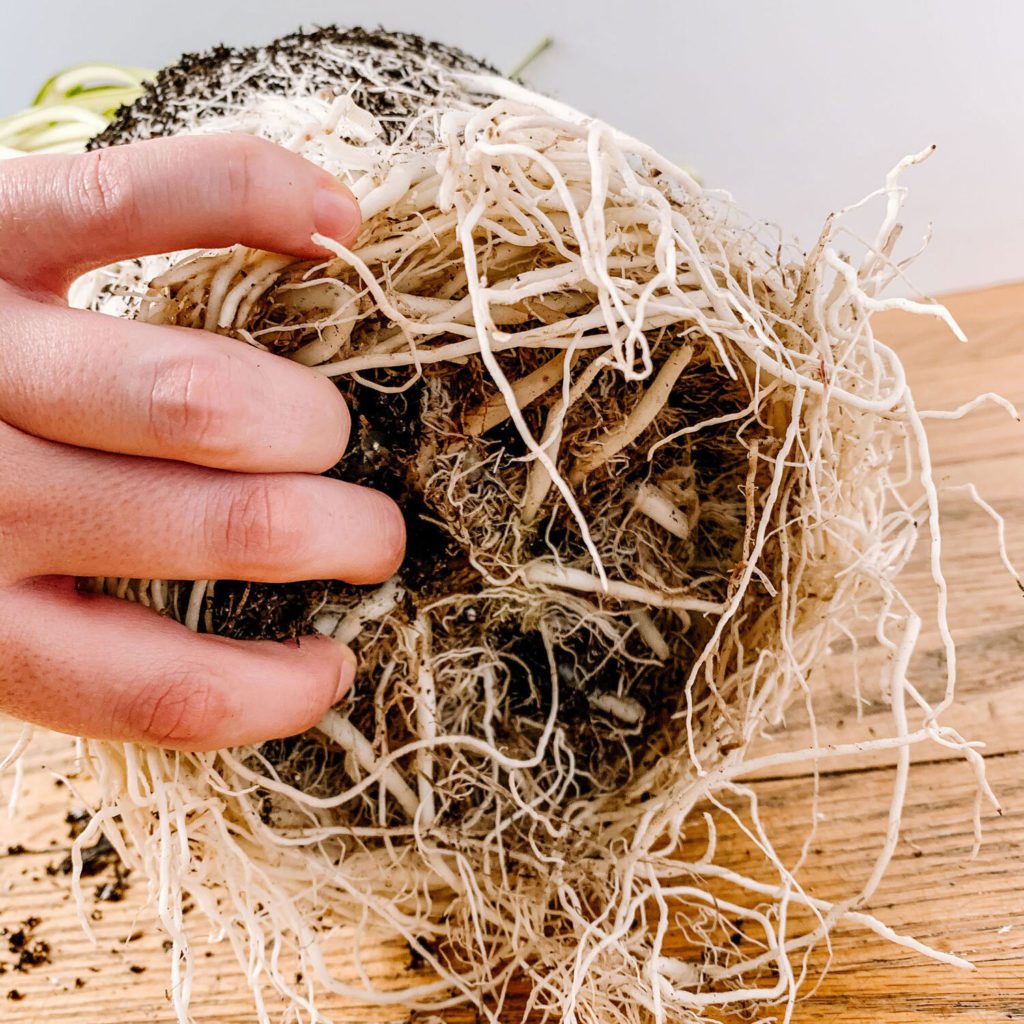Root binding is a big problem when it comes to the health of the plants. In fact, many scientists and experts from around the world agree that the roots or the root system is one of the most important components of any plant, if not THE most important. Not only do the roots anchor a plant into the ground but they are also necessary for the absorption of water and nutrients that are vital for a plant’s growth and development.
Plants by their very nature are meant to remain in the ground where their roots can grow and spread out freely into the soil. However, because of human intervention and plants often being brought indoors as house plants or kept in confined spaces that inhibits the space that a plant has for their roots to expand.
What is Root Binding?
Root binding, also commonly known as root-circling, happens when the roots of a plant form into a dense, tangled mass. As a result, this inhibits the growth of the plant by minimizing the space in the soil that is available for new plant growth.
Although most plants are susceptible to root-binding, this condition is often accelerated by:
- tighter soils
- shallow potting
- over-watering
- OR poor drainage
Healthy plant growth can also lead to a plant developing a root system that is too big for its container. Even plants that grow naturally in the ground can fall victim to root binding if the barriers inside the soil, such as foundation walls or pipes, stop the roots.
The stress or starvation of a plant are very common in cases of root binding. A root bound plant will receive less nutrition and hydration than plants that are not root-bound, in severe cases a plants roots can suffocate and ultimately cause the plant to die.
It is important to be able to identify and treat root bound plants, as well as have the knowledge on how to prevent it from happening in the first place. This will help prolong the lifespan of your plants and keep them healthier for longer.
How to Identify a Root Bound Plant?
A plant suffering from root binding will often show the same symptoms as an under-watered plant. As a result, it will have fast wilting and brown or yellow leaves. As well as having stunted growth.
Severe root bounded plants could also possibly cause its container to shift out of shape or crack due to pressure caused by the mass of roots growing inside the soil. There may also be roots visible above the soil.
How to Treat a Root Bound Plant?
To treat a root bound plant you can remove the plant from its container and prune the roots to allow space for new plant growth. In order to avoid manually pruning your roots as they grow, you can also alternatively repot the plant into a bigger container. This will give the plant more space for its root system to expand.
When repotting the plant, adding in some fresh potting soil will provide it with additional essential nutrients needed to generate new growth.
How to Prevent Root Binding From First Happening?
In order to prevent root binding from occuring, you need to monitor the growth of your plant’s roots and prune them accordingly. A great start to prevent it from happening would be to switch out your plastic pots for breathable containers.
The container or pot that you put your plants in can have a huge impact on whether or not the plant will experience root binding. Plastic pots are not only bad for the environment, due to the high pollution, but they are also the leading cause of root binding. This is because plastic pots are not breathable enough to allow for proper air circulation.
Replacing your plastic pots with breathable containers, such as fabric plant pots, grow bags or air pots, allow oxygen to enter the root zone of the plant. Proper air circulation leads air-pruning, which occurs when a plant’s roots hit the wall of the pot or detect air. This allows the air to naturally prune the roots and prevent them from spreading out and tangling together inside the soil.
Get Your Fabric Plant Bags Today!
The WhizzPouch is an excellent example of a plastic-free fabric plant pot that assists to prevent root binding. These eco-friendly grow bags are breathable, washable and resuable. Not only does it save you water, but can increase your yield up to 22%. This is due to it allowing for the proper air circulation and drainage, which in turn boosts the density and health of your plant’s roots. As a result, you will have healthier, stronger plants that will last a lifetime.
Get your WhizzPouch today from only R18.95! Simply visit our online store or contact us to place your order.



